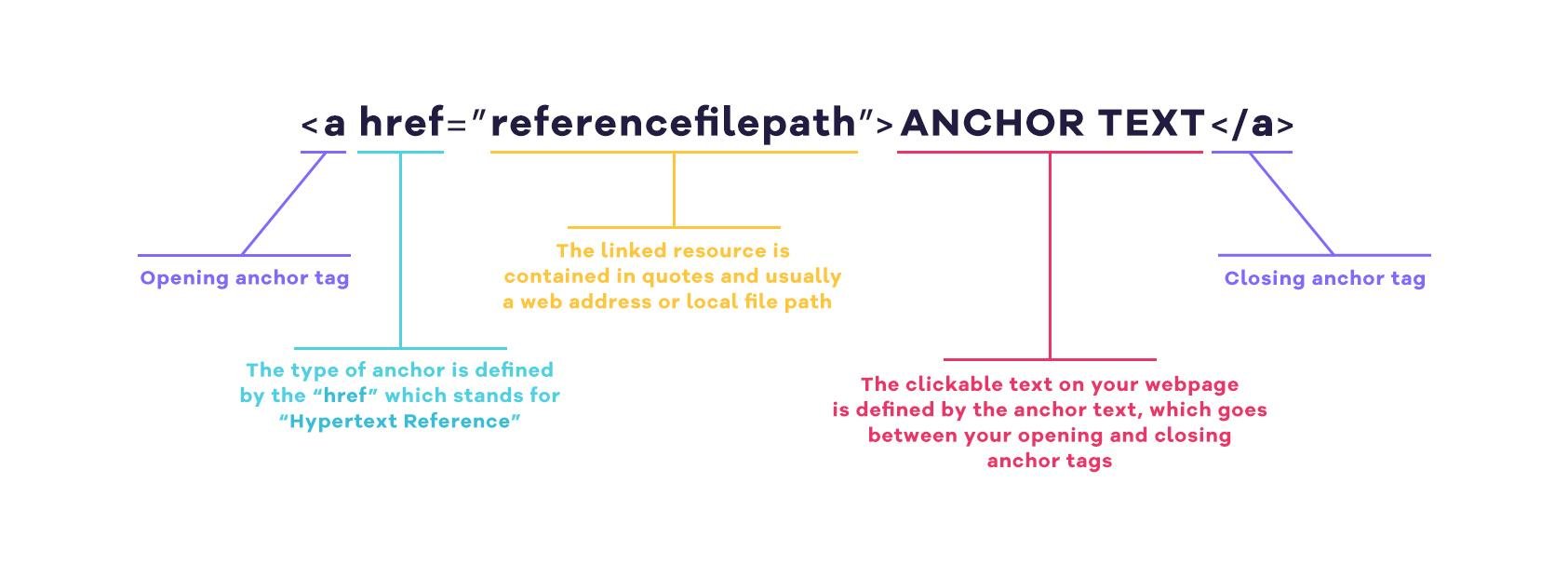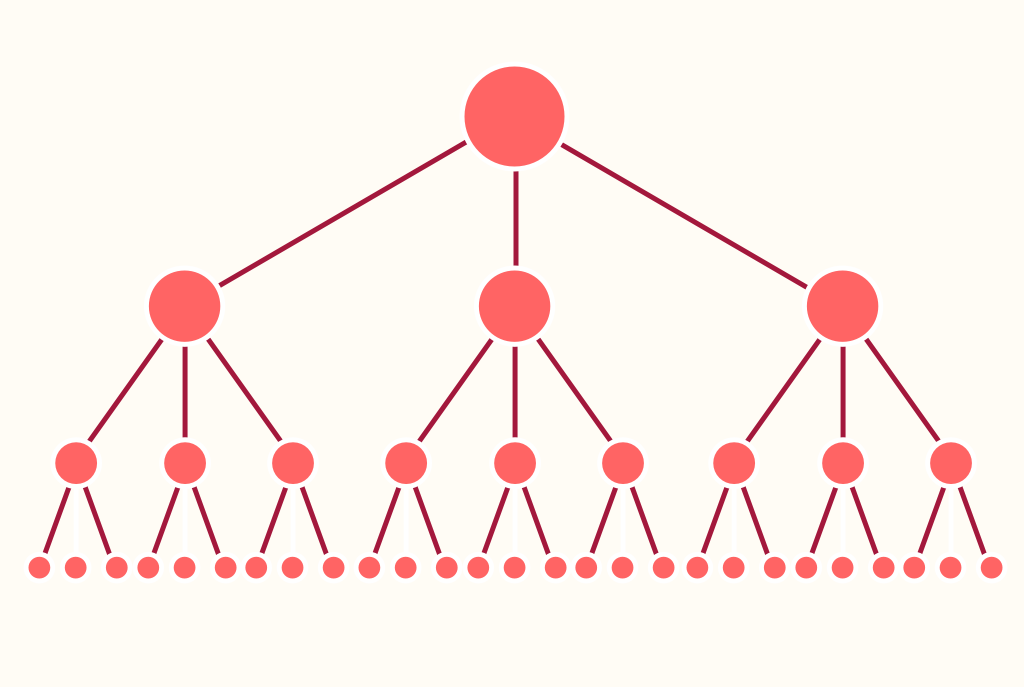
A hyperlink is the method of linking from one file, webpage, image, or other type of content to another hosted on the web. It is typically denoted by highlighted, underlined text on a webpage that is a unique color. Once clicked, the hyperlink will pull up the referenced URL, image, webpage or file in the browser. Hyperlinks are the primary way that people and websites share information online.
The term “hyper” comes from the original terminology of “hypertext” which was coined in the 1960s referring to text that is displayed digitally on a computer or device and contains some type of reference information like a link, media, table and more. Hypertext is text that includes hyperlinks in it.
A hyperlink can be added to a webpage by wrapping the text in a the following HTML code:
<a href=”referencefilepath”>ANCHOR TEXT</a>
The hyperlink code includes the following components:
- An opening anchor tag (
<a>) - The type of anchor is then defined by “href” which stands for “Hypertext Reference”
- The referenced URL or file location is then included in the quotes. This will commonly be the web address of the page you want to link to
- The anchor text is located between the opening and closing “a” tags and defines the linked text that will display on the webpage.
- The opening anchor tag is then closed

History of Hyperlinks
In the early days of computing, hyperlinks were an important technological development that helped connect the web. Originally coined by Ted Nelson who was working on Project Xanadu, an early World Wide Web project, the hyperlink was the foundation of several key moments in the growth of our connected web.
- 1960 - 1980: Ted Nelson writes extensively about cross-referencing and computing, forming a lot of foundational theory behind hypertext, hyperlinks, and how they should work.
- 1966: Douglas Engelbart and Jeff Rulifson broke ground by being the first to implement hyperlinks as a means of scrolling through a single document.
- 1968: Engelbart and Rulifson go one step further by using hyperlinks to link between paragraphs of different documents.
- 1983: Ben Shneiderman and Dan Ostroff are the first to used a highlighted link that we are familiar with today in their HyperTIES system. They originally referred to them as “illuminated links.”
- 1988: Shneiderman and Greg Kearsley use their HyperTIES system to publish the first web journal and e-book.
- Late 80s & 1990s: Personal computing adopts the hyperlink and both Apple and Windows utilize hyperlinks to reference text in help files and databases.
Hyperlinks have come along way since their inception in the early days of computing. With the growth of search engines and e-commerce, hyperlinks have become a coveted version of online currency for businesses looking to grow their traffic and trust with both search engines and customers.
In the world of SEO, competitive sites are working to actively build backlinks through both benevolent and questionable means.
How Hyperlinks Impact SEO
A site’s backlinks have a huge impact on their ranking based on today’s ranking factors. In the world of SEO, competitive sites are working to actively build backlinks through both benevolent and questionable means.
In fact, Google placed so much importance on a site’s backlinks that websites started buying hyperlinks to their site from low-quality sources, artificially inflating their rankings. To combat the practice, Google released the Penguin search algorithm update, causing a massive stir in the search industry, decimating some websites entirely. According to an SEO Roundtable poll conducted in 2012, approximately 65% of sites were negatively affected by the Google Penguin update.
How to Use Hyperlinks in Your Ecommerce SEO Strategy
Hyperlinks are a great way to make sure you have an easy-to-use site. A healthy interlinking strategy is also part of a well-rounded SEO campaign and can help search engines determine which pages relate to which and find a site hierarchy.
For e-commerce SEO and Volusion merchants, hyperlinks can help both users and search engines easily find relatable products or resources for your business.
- For any main pages (i.e. Home, About, primary category pages), be sure to link to relevant sub- or child pages you reference in your body copy. This will help search engines index those pages and give them the appropriate hierarchy within your overall site structure.
- For product pages, enabling related products will add additional products to crawl on individual product pages for your customers and search engines.
The ideal internal linking strategy is to create a network that looks like a pyramid, with your homepage at the top linking down to your most important sub pages and so on.

If you want more information on how to optimize your ecommerce store with Volusion, get in touch with us today!
LEARN MORE
Ready to take your ecommerce SEO to the next level? Learn how Volusion can help you increase traffic and sales for your store!











